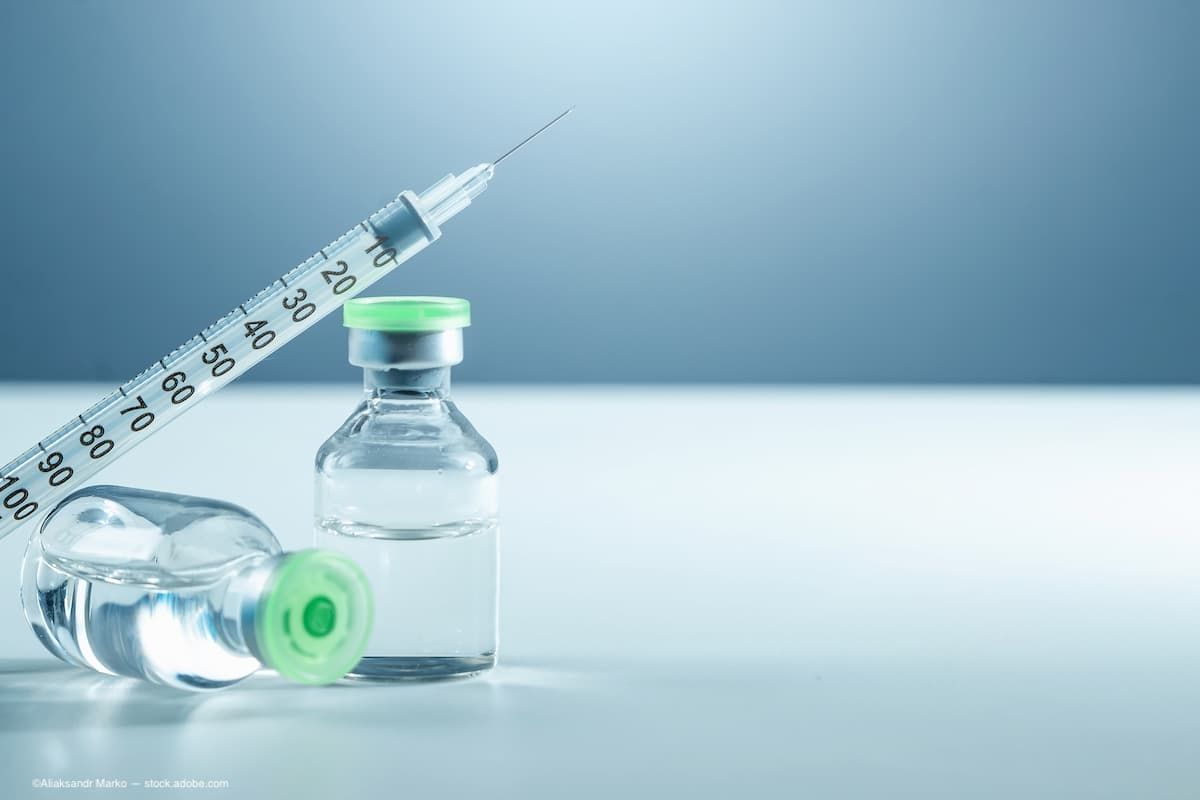Predicting intraocular inflammation after brolucizumab injections in neovascular AMD
Japanese investigators may have found a way of predicting which patients will develop intraocular inflammation in retrospective study.
(Image Credit: AdobeStock)

Japanese investigators may have found of way of predicting which patients will develop intraocular inflammation following brolucizumab injections (Beovue, Novartis) administered to treat neovascular age-related macular degeneration (nAMD). The predictive factors were the previous number of anti-vascular endothelial growth factors and the photometry laser flare-cell (LFCP) value,1 according to Keisuke Hoshi, MD, lead author, and colleagues from the Tohoku University School of Medicine, Sendai, Japan.
In this retrospective study, the researchers evaluated the baseline characteristics associated with the incidence of intraocular inflammation after intravitreal injections of brolucizumab in patients treated for nAMD in patients who developed and did not develop intraocular inflammation.
This retrospective study included 66 eyes (62 consecutive patients) with nAMD who were treated with intravitreous injections of brolucizumab. Of the study eyes, 18 were treatment-naïve and 48 eyes had been switched to brolucizumab from another anti-VEGF therapy.
Hoshi reported that intraocular inflammation developed in 8 of 66 eyes (12.1%) that had switched therapy. The following baseline characteristics did not differ between the groups: age, sex, nAMD type, lens status, visual acuity, central macular thickness, and a history of diabetes.
The investigators found the number of previous anti-VEGF injections before administration of brolucizumab was greater in the patients in whom intraocular inflammation developed (P = 0.004). In addition, the ratio of patients with a photometry laser flare-cell value exceeding 15 photon counts per millisecond (pc/ms) was higher in those in whom intraocular inflammation developed (P = 0.017).
“Multivariate logistic regression analysis showed that a greater number of previous anti-VEGF injections (odds ratio [OR]: 1.12, P = 0.006; area under the curve: 0.82, cut-off score, 14.0) and an photometry laser flare-cell value over 15 pc/ms (OR: 81.6, P = 0.031) were significantly associated with the incidence of IOI after intravitreous brolucizumab injections,” they reported and advised that these parameters may serve as useful predictors of the incidence of intraocular inflammation after brolucizumab injections in eyes with nAMD.
Reference:
Hoshi K, Kunikata H, Aizawa N, et al. Baseline characteristics associated with the incidence of intraocular inflammation after the intravitreous injection of brolucizumab. Int Ophthalmol. 2023; published online Dec 3, 2023; https://doi.org/10.1007/s10792-023-02870-4